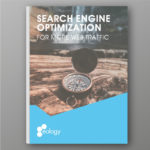
Get tips and tricks to get the most out of your Google reviews. Learn why they are so important, how to deal with negative reviews and how to get more reviews! ... Continue reading
| 18 min |


| 09 min |
Snippet – What is it anyway and what is it important for?
Components of the snippet and where they come from
Which snippet types are there?
Creating snippets – This is how it’s done!
Snippet generators – These tools help you to create them
How to check the performance
Conclusion: Snippets, clicks and search engine optimization
A Snippet is a short excerpt from the source code of a website. It is displayed in the SERPs of the search engines and is what you see from a website when you Google something. A snippet is therefore a small insight into what you can expect on a page. It serves as a summary and teaser and should encourage the user to want to read more of the content. Essentially, Google automatically pulls the content of the snippet from the metadata of a page. Thus, depending on what is being searched for, different snippets are generated.
A snippet has different components. It is important that you have stored the relevant meta data in the source code of a website, otherwise Google will automatically generate the snippet from the website’s information. Therefore, there are three main components that you should pay attention to:

All three elements are limited to a certain number of pixels. If the title and/or description exceed this, they are shortened by Google. Thus, they are cut off at a certain position. The URL does not necessarily have to be displayed in full, either. If it is too long, it is also reduced. However, the possible pixel width varies from mobile to desktop snippets.

Based on the example, you can see that both the title and description were cut off much earlier in the desktop version than in the mobile snippet. These pixel widths are currently the standards for snippets (as of August 2020):
The length limits are specified in pixels, as the pixel width of individual characters varies. It is therefore problematic to specify an exact number of characters. In addition, Google changes the limits regularly. Consequently, it is difficult to make permanent, generally valid statements that determine when a snippet is cut off.
Both Title and Description are fundamental functions to increase the click-through rate of your website in the organic search results. According to Google, this is also much more important than the frequency with which your page is displayed in the SERPs. For this reason, you should know some basics about meta title and description.
Of course, there are some tips in dealing with the title of the snippet. You should always focus on the user when designing it. The title is an important factor that determines whether the searcher will click on your snippet. Therefore, it should be informative and meaningful. If it arouses the curiosity of the user, your chances that he will also come to your page are high. Additionally, it is essential that you use an individual and unique title for each of your pages. Ideally, this should also contain the keywords for which the page should rank. Here it is recommended to place these, if possible, in the first place or at least relatively far in front of the title.
The meta description is a bit more complex. Here you can make rich snippet integrations – this is e.g. the presented date, which you sometimes see in the search results. If you use this, however, it will be at the expense of your description, as this will shrink your pixel quota. Another special feature is that your description is only displayed in one line if you only use half of the pixel quota. If this is the case, you do not use the full potential and the attention that your snippet attracts is reduced.
You can increase it by using special characters and emojis. However, this should not seem too “spammy”. So use this only with caution. You can also use the text to draw the user’s attention to the snippet. The AIDA model can help you to write the content of your page in a user-oriented way. For this, you go through the four steps of the sales process in order to perfectly pick up the searcher with your snippet. Your snippet should therefore attract attention, arouse interest with the text, trigger a desire to buy and then lead to an action through a call to action.
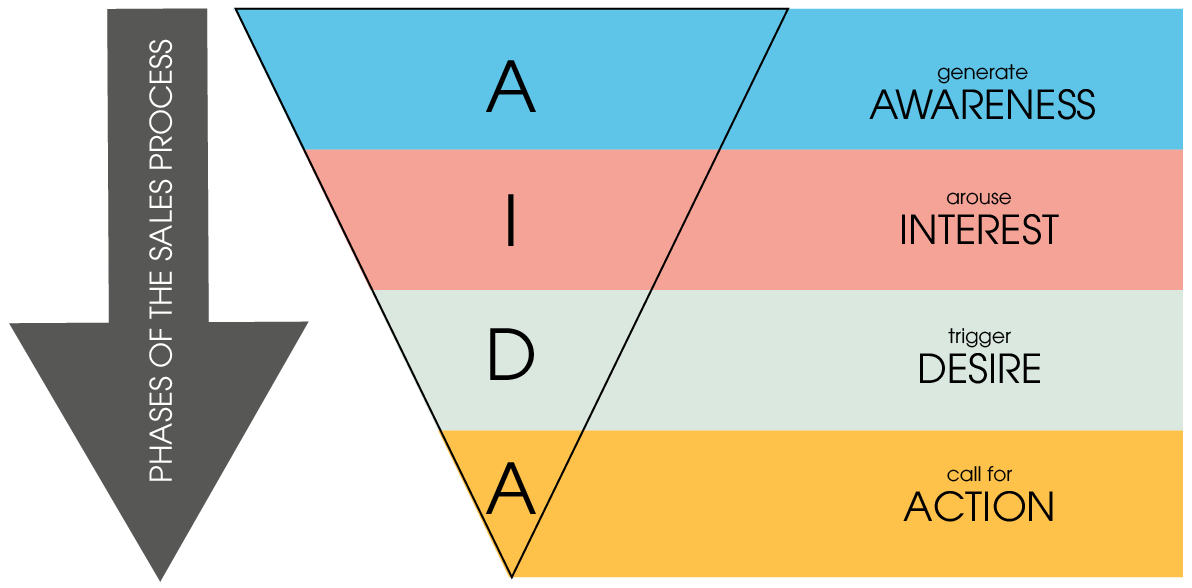
So far, you have heard primarily about classic SERP snippets. These are the most important variant for SEO. However, there are other different types. Especially in the IT sector, you can find snippets not only in search engine optimization, but also in coding or programming.
The code snippet is thus a short piece of the source code. Here, the “snippet” is written in programming language and serves as a small building block for the website. You can copy-paste this snippet where you need it. This saves you work and time. Code snippets are of course only useful in places that do not necessarily have to be strongly individualized. If the environment of the code lines is too complex, you should not use code snippets.
The SERP snippet is, as I said, the classic one, which you are probably most familiar with due to various search engines. It is a short excerpt of a website, which is displayed in the search results. The search engine gets the information for this from the metadata of a page. If it does not find anything there, the snippet is automatically generated on the basis of the website content.
Classic SERP snippets can be enriched with additional information through structured data (in the form of JSON-LD, microdata or RDFa). These are stored in the source code. If this is the case, they are no longer called SERP snippet, but rich snippet. They are thus “rich” in additional information. These additional elements make the snippet stand out even more and generate more attention. So, rich snippets are a good tool to generate clicks and increase traffic.
The following enhancement options are available:
To get these snippet extensions, you need to add structured data to the source code in addition to the metadata. How exactly you should markup this data so that Google can process it properly, you can find out on schema.org.
Featured snippets are direct answers that you receive to your search query. So you don’t have to go to the website to find out what you wanted to know, but you get it directly in the SERPs.
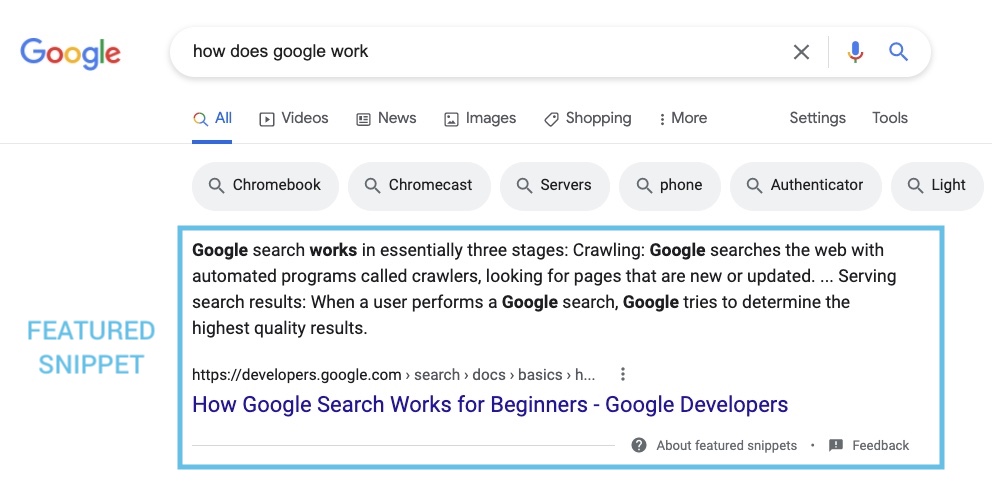
Google automatically looks for the most relevant page to the corresponding search term and creates a suitable snippet, which is then highlighted. The place of display is interesting: The featured snippet is always displayed at the top as the first organic search result. This is the so-called position zero. However, pages that are displayed here do not receive any additional page 1 ranking. In addition, Google added another feature. If a user clicks on the featured snippet, the information contained there is marked on the page to directly highlight the relevant part. You can read more about it here.
The search engine giant is continuously working on improving search results, which is how this type of snippet came to be. It is intended to help users find what they are looking for even more easily.
So much for the theory – but what is important when creating a snippet? Always remember: It is essential that you draw the user’s attention to your snippet. However, this should not be achieved by false promises, because the user will quickly leave the page if he does not find there what he is looking for and/or was promised to him. If this increases the bounce rate, this can have negative consequences for your ranking. Also, the user experience is getting worse.
The user perceives the title as a kind of headline of the snippet. Accordingly, he expects that what he reads here is also the topic of the website that appears when he clicks on the snippet. So, it is imperative that the user knows at a glance what to expect. The title should therefore be informative and meaningful, and not a mere list or string of keywords. In the best case, the user will find complete sentences here, in which the main keyword is placed as far in front as possible. Of course, it would be ideal if it is the first word of the sentence.
Depending on what you want to promote, it is also advisable to include a call to action. Through this, you can further encourage users to click on your snippet. To know which type of call to action is interesting for which page, you should know the respective search intentions that are associated with it. For example, if the search query has a transactional intent, a purchase prompt such as “buy cheap here” is a good choice. If the user is only looking for information (informational search intention), a prompt such as “click here for more information” could encourage them to open the web page.
It is also important that the title is as individual as possible. A completely unique one should be created for each URL.
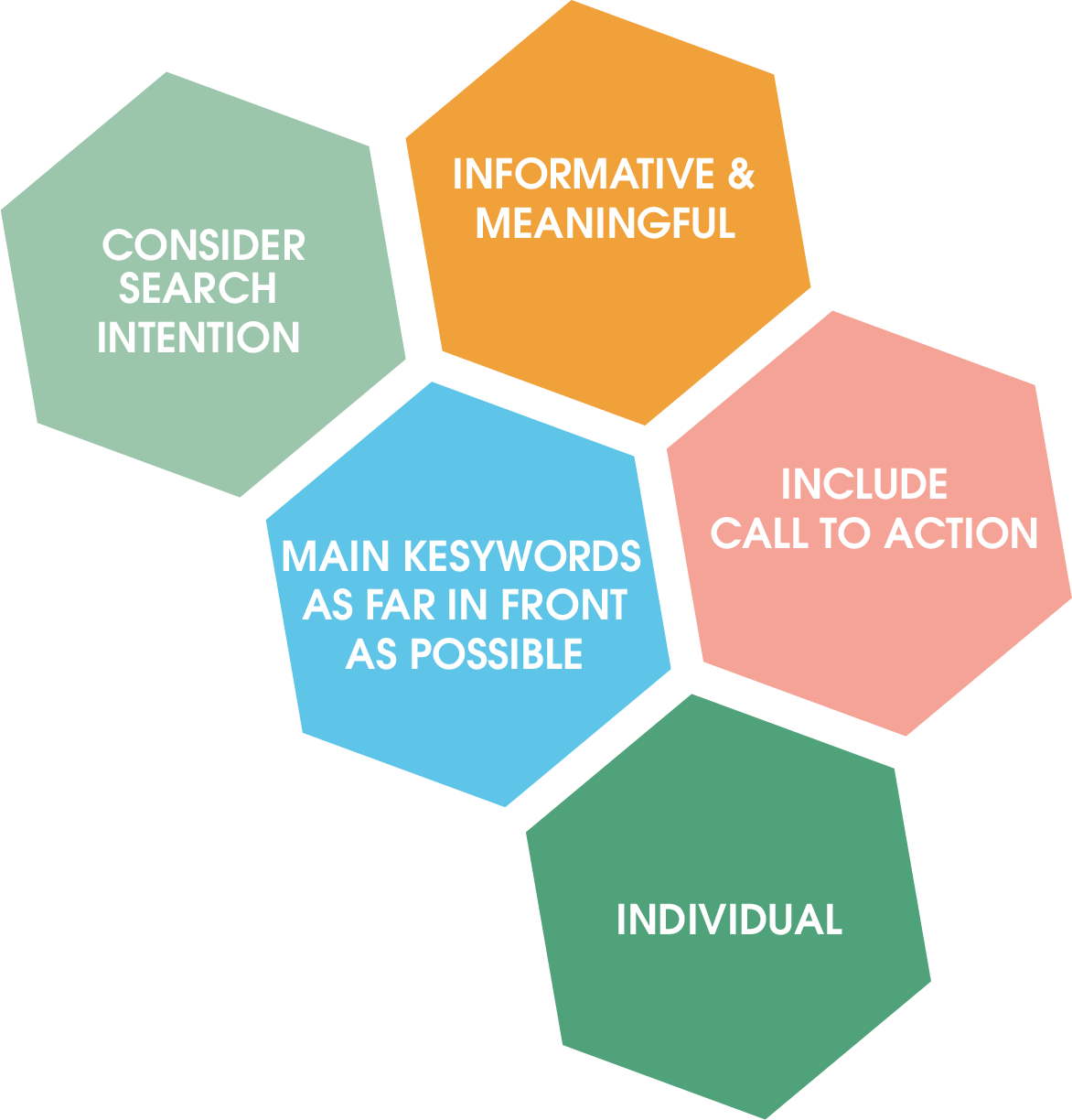
The description in turn serves as a short summary of the page. Here, too, the user’s attention should be drawn to your own snippet. Focus on the USPs of your service or products to convince the user of the unique selling points already in this short preview. This arouses interest and increases your chances that the optional user will click on the snippet. Equally, helpful are call to actions, which ask the user to act in a certain way.
How do you manage to convince the user with your description? The most important thing is: comprehensibility. Write in short and simple sentences. If the user has to read over the description a second time to understand it, he won’t go to your site. Also, it is helpful to address relevant WH-questions that you find related to the keyword you want to rank for. Users have these questions and want to find answers to them. However, the length of your description is limited. So you don’t have the possibility to be too long. Therefore, concentrate on the essentials and do not forget to include your keywords. An individual description tailored to the target page is just as important as an individual title to attract users.
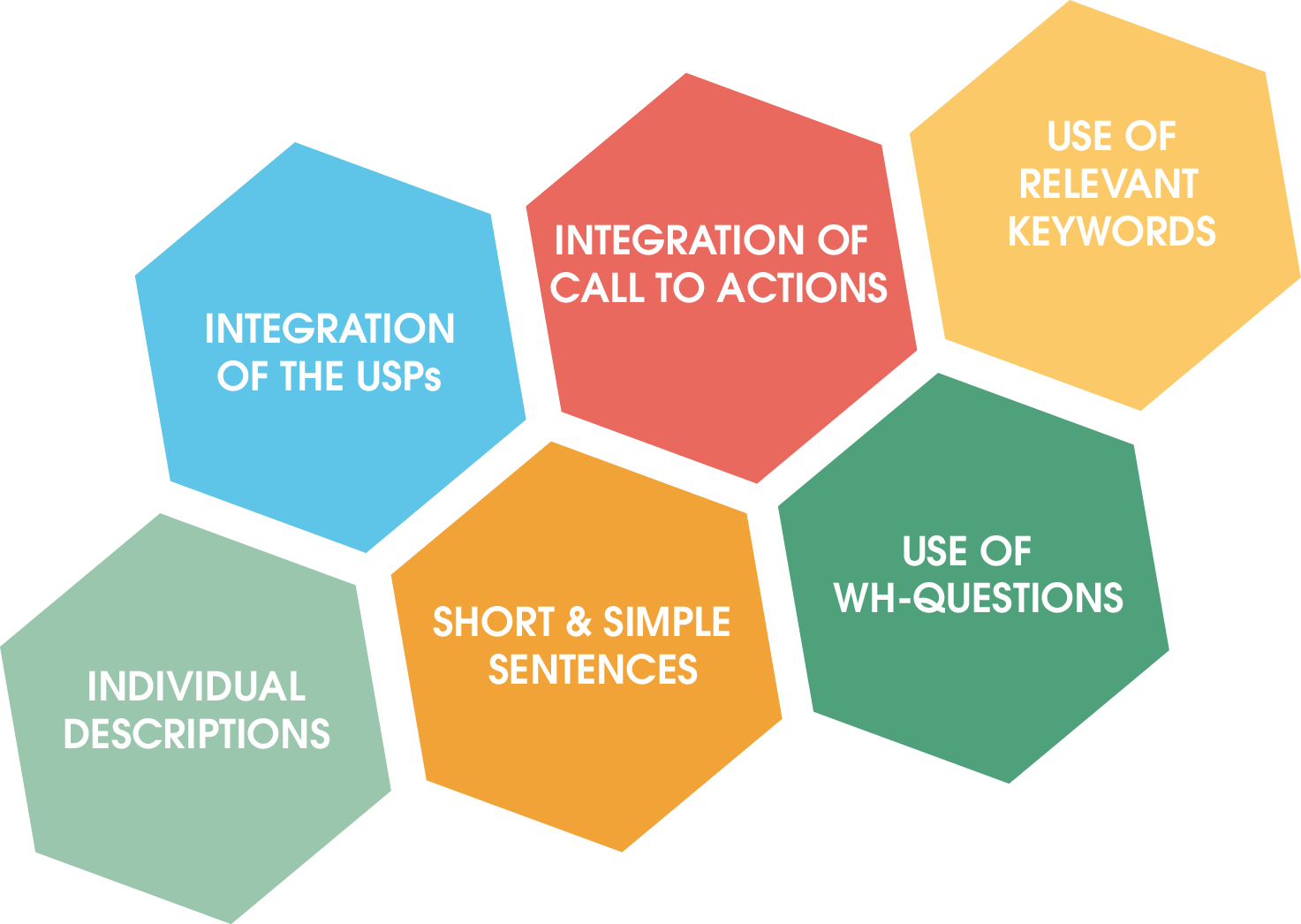
This is the search term that the user types into the search bar. If it appears in your meta description, it will be bolded. It is as simple as that. If your description does not contain the keywords the user is looking for, Google automatically creates a new, individual description. The corresponding word can be found there – provided that your page matches the search query.
As you may have noticed by now, drawing users’ attention to your snippet is the name of the game. Special characters and emojis can be an important tool for this. Both are a good way to stand out from the competition. Of course, you should make sure that emojis and special characters are not used indiscriminately, they should always fit the theme and your corporate image. Otherwise, it can quickly look dubious. Both are used more often in the description – in the title, emojis and special characters are used less often. You should also make sure that they are actually displayed when you use them. Therefore, never put them at the beginning or end of your description, otherwise they run the risk of being cut off.
Especially on the PC, it is often time-consuming to include emojis in texts. What many do not know: Using very simple shortcuts, you can easily add emojis to your texts without copy-pasting. Apple MacBook users can use the following key combination: Control + Command + Space. Windows PC users open the emoji window by pressing the Windows key and the dot key. Also cool: By clicking on the double arrow, you also get a selection of special characters.
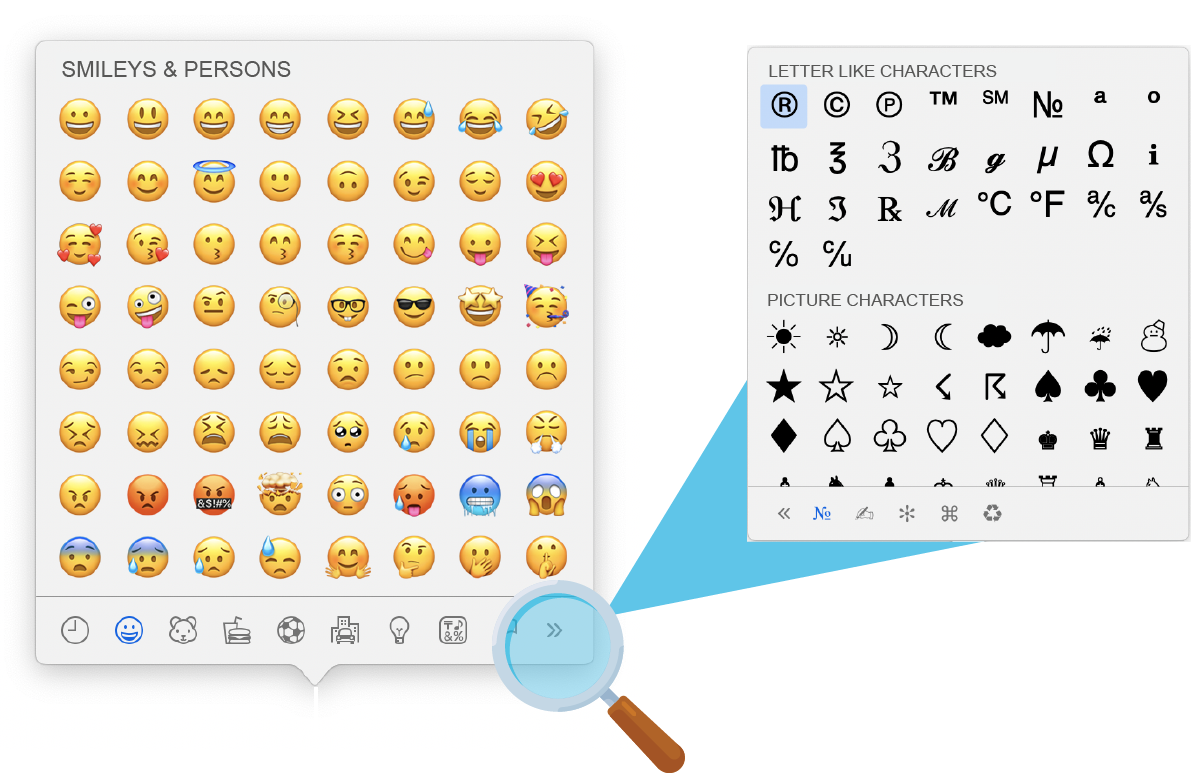
Snippet creation does not have to be a complicated manual task. On the web you can find numerous tools and aids, the so-called snippet generators. These show you whether the length of your snippet fits. With the help of a preview, you can also see directly how your snippet will be displayed in the search results. The generators show you, among other things, whether your entered text has the right length, regardless of whether it is the title or description. In addition, some tools help you to create rich snippets. For this purpose, there are so-called “advanced functions”, in which you can simply check the snippet extensions that you want to add. The following tool is interesting:
SISTRIX is a versatile SEO tool and also for the snippets it does not let you down. It shows you both the desktop and the mobile version of your snippet and gives you the opportunity to make up to 25 free queries per day. Once you have reached this, registration for the tool becomes necessary. The SISTRIX SERP snippet generator shows you how your snippet is displayed to users in the search engine. It warns you if a part of the snippet is too long and in danger of being shortened. So you can see where your title or description might be cut off. Once you have found this out, you can optimize relatively easily. This also helps your click through rate (CTR).
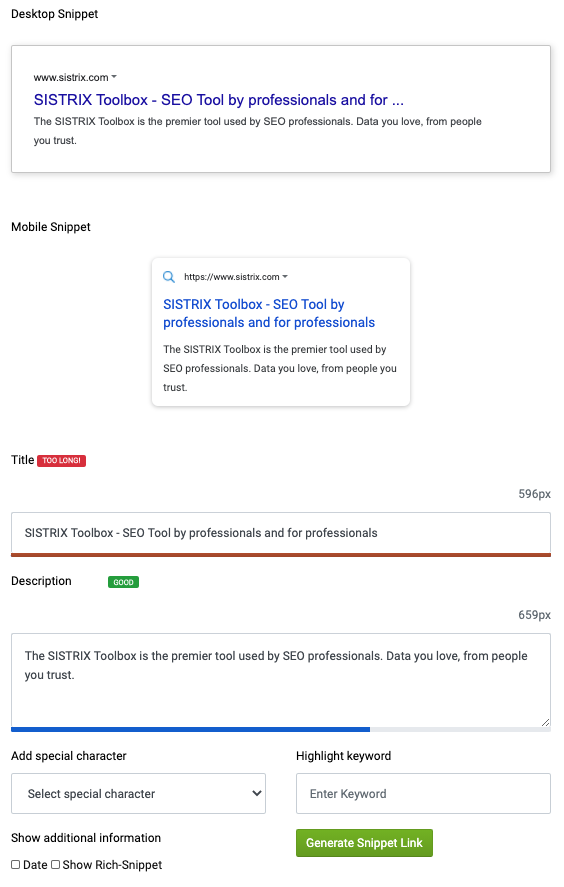
Of course, it is not only important to optimize your snippets regularly, but also to check their performance. To do this, you can use the Google Search Console to look at some interesting data that will tell you which snippet is performing well and which ones you might want to tweak. To do this, use the “Performance” tab of the tool. You will find the following key figures there:
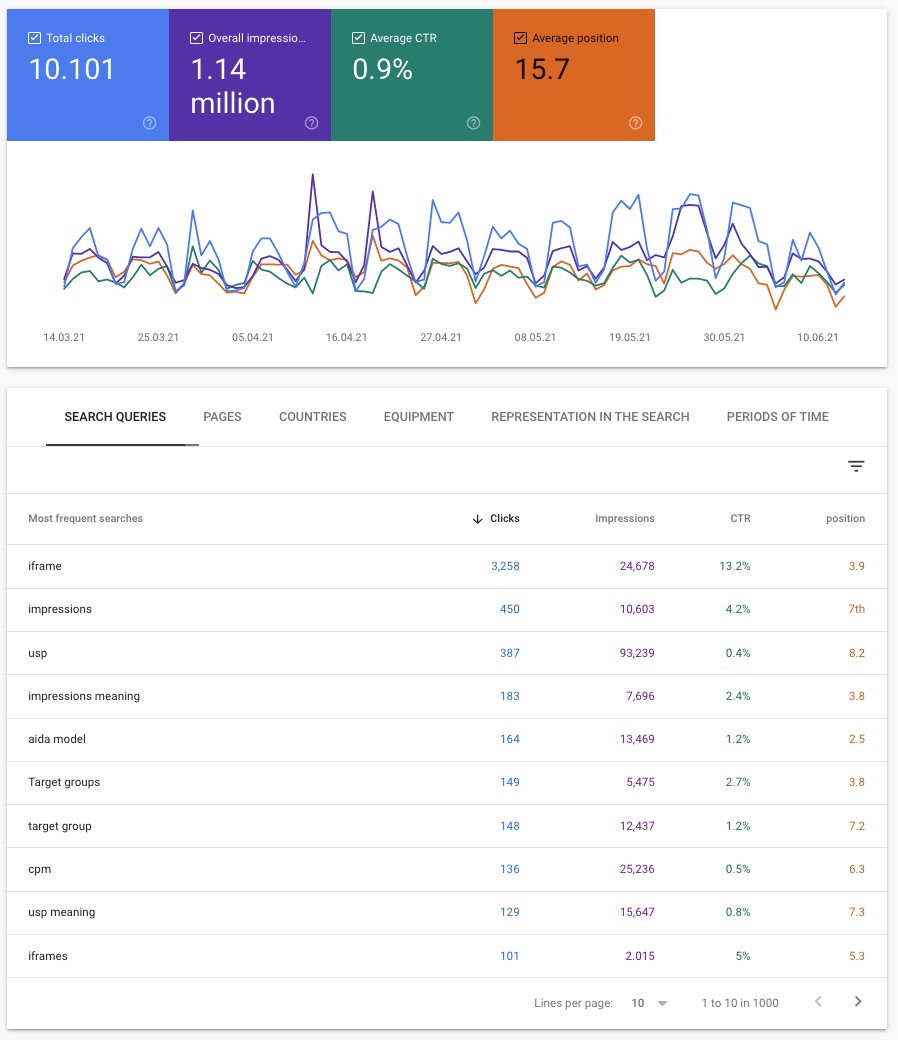
All four areas are interesting for a targeted optimization. You can use this data to determine how well a snippet is received by users. For example, if the impressions are high, but the clicks are low and therefore the CTR is low, this means that the snippet should be optimized. On the whole, you can assume that a snippet with a higher CTR will be better received by the user. It is also worth taking a look at the position in the search results. The ranking of the page also provides information about the quality of the snippet. If a web page is in position one, but still only receives a very low number of clicks, there is also a need for action here.
If you want to be found, you should appear in the top third of search results. To achieve this, you rely on SEO, but this alone is not necessarily enough. A snippet is the first point of contact that the Internet user has with your website, so it is important to optimize it. This way you will increase the number of clicks and traffic on your site. Ideally, an optimized snippet will also have a positive effect on your Google ranking, because the primary goal is always to draw the user’s attention to your snippet. You can achieve this by using emojis and special characters, among other things. Individual snippets for each individual subpage are the be-all and end-all – the title and description should therefore always be adapted to the landing page. Also, make sure not to exceed the character limits. If you also regularly check the performance, almost nothing can go wrong with your snippet!
You want to learn more about how to optimize for search engines?


